Glaucoma Medication Decision Assistant
How to Use This Tool
Answer these questions to find the most appropriate glaucoma medication for your situation. Based on the article content, we'll recommend options that match your medical profile and treatment goals.
When it comes to lowering eye pressure, Bimatoprost comparison is on many patients' minds. If you’ve heard about Bimat (bimatoprost) and wonder how it stacks up against other options, this guide breaks down the facts so you can decide what’s best for your eyes.
What Is Bimatoprost?
Bimatoprost is a prostaglandin analog eye drop approved by the FDA in 2001 for treating open‑angle glaucoma and ocular hypertension. It works by increasing the outflow of aqueous humor through the uveoscleral pathway, typically lowering intraocular pressure (IOP) by 25‑30% after a few weeks of use.
Besides pressure reduction, many users notice longer, darker eyelashes-a side effect that spawned the cosmetic product Latisse. While effective, Bimatoprost isn’t the only drug that can control IOP, and each alternative brings its own strengths and trade‑offs.
Key Alternatives to Bimatoprost
The most common alternatives belong to the same prostaglandin class or to other mechanisms such as beta‑blockers or alpha‑agonists. Below are the top five alternatives you’ll encounter in a typical ophthalmology practice.
- Latanoprost - a prostaglandin F2α analogue introduced in 1996.
- Travoprost - another prostaglandin analogue, launched in 2001.
- Timolol - a non‑selective beta‑blocker eye drop, FDA‑approved in 1978.
- Brimonidine - an alpha‑2 adrenergic agonist first approved in 1996.
- Dorzolamide - a carbonic anhydrase inhibitor eye drop, available since 1995.
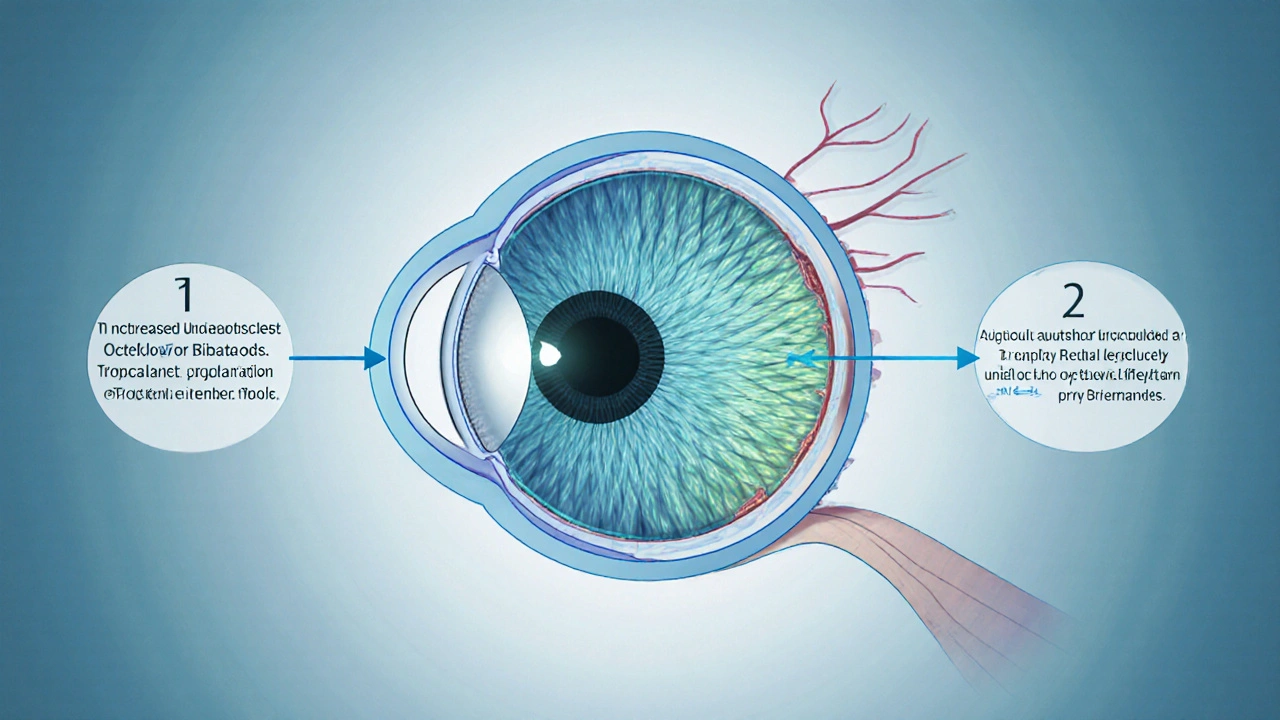
Side‑by‑Side Comparison Table
| Drug | Class | Mechanism | Typical IOP Reduction | Common Side Effects | FDA Approval Year |
|---|---|---|---|---|---|
| Bimatoprost | Prostaglandin analog | Increases uveoscleral outflow | 25‑30% | Hyperemia, eyelash growth, darkening of iris | 2001 |
| Latanoprost | Prostaglandin analog | Enhances uveoscleral outflow | 22‑26% | Red eye, mild eyelash changes | 1996 |
| Travoprost | Prostaglandin analog | Increases uveoscleral outflow | 24‑28% | Conjunctival hyperemia, foreign body sensation | 2001 |
| Timolol | Beta‑blocker | Decreases aqueous humor production | 20‑25% | Bronchospasm, bradycardia, dry eyes | 1978 |
| Brimonidine | Alpha‑2 agonist | Reduces production & increases outflow | 18‑22% | Allergic conjunctivitis, fatigue | 1996 |
| Dorzolamide | Carbonic anhydrase inhibitor | Decreases aqueous humor formation | 15‑20% | Stinging, bitter taste, rare corneal edema | 1995 |
How to Choose the Right Eye Drop for You
Picking a medication isn’t just about the percentage drop in pressure. Consider these practical factors:
- Target IOP level. If you need the strongest reduction, prostaglandin analogs (Bimatoprost, Travoprost) usually top the list. \n
- Side‑effect tolerance. Patients with chronic lung disease may avoid beta‑blockers like Timolol. Those concerned about eye redness often prefer Latanoprost over Bimatoprost.
- Compliance. Once‑daily dosing (most prostaglandins) is easier than multiple daily doses required for some carbonic anhydrase inhibitors.
- Cost & insurance coverage. Generic versions of Timolol and Latanoprost are typically cheaper than brand‑name Bimatoprost.
- Adjunctive therapy. In refractory cases, doctors combine drugs from different classes to hit a cumulative 30‑35% IOP drop.
Special Situations Where Bimatoprost Shines
Even with many alternatives, Bimatoprost has unique niches:
- Eyelash enhancement. For patients seeking both glaucoma control and cosmetic benefit, the drug’s side effect becomes a selling point.
- Resistant ocular hypertension. If other prostaglandins fail to reach target pressure, Bimatoprost’s slightly higher efficacy can be decisive.
- Once‑daily dosing. All prostaglandins are once daily, but Bimatoprost’s long‑acting formulation reduces variability in IOP throughout the day.
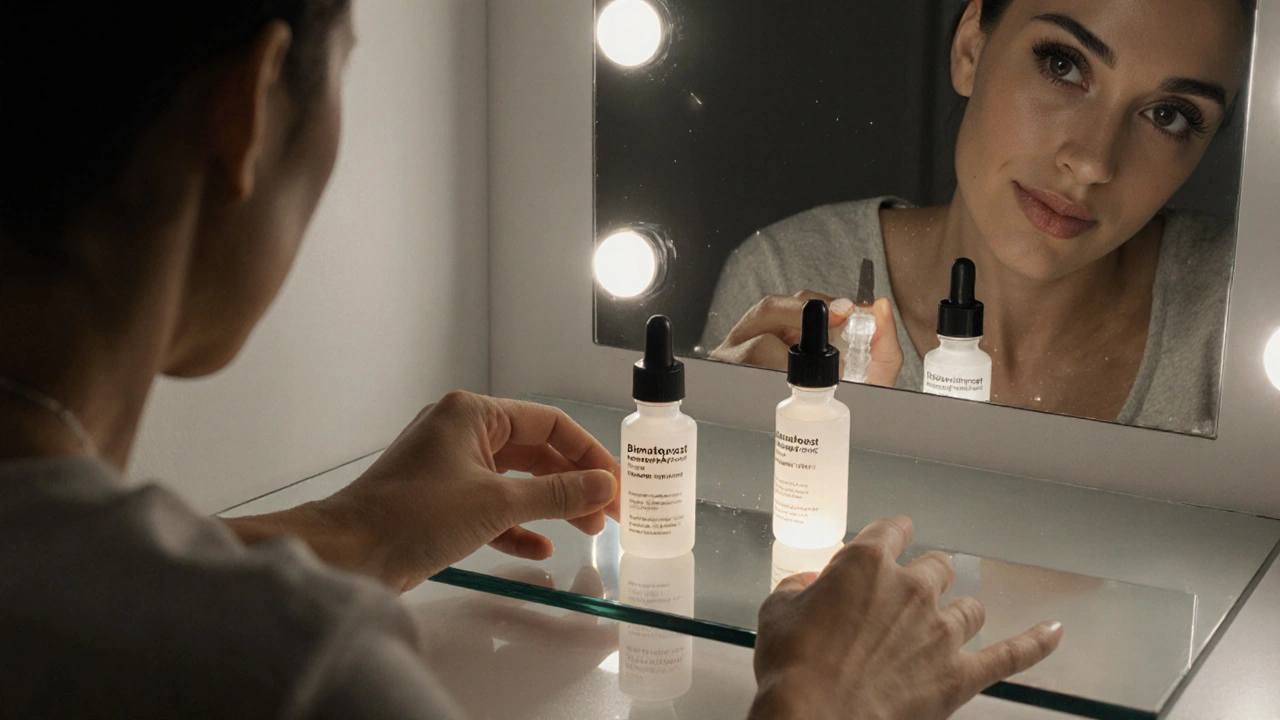
Potential Pitfalls and How to Manage Them
Every medication carries risks. Here’s how to spot and address common issues with Bimatoprost and its rivals:
| Issue | Typical Drug | Management Strategy |
|---|---|---|
| Conjunctival hyperemia | Bimatoprost, Travoprost | Switch to Latanoprost or add a lubricating drop. |
| Darkening of iris | Bimatoprost | Inform patients pre‑treatment; irreversible but cosmetic. |
| Systemic bronchospasm | Timolol | Discontinue; consider prostaglandin analog. |
| Allergic conjunctivitis | Brimonidine | Use antihistamine eye drops; consider alternative class. |
| Stinging on instillation | Dorzolamide | Advise gentle application; try preservative‑free formulation. |
Bottom Line
For most patients, a prostaglandin analog remains the first‑line choice because of its potent IOP‑lowering effect and convenient once‑daily schedule. Bimatoprost edges out its peers in raw efficacy, but Latanoprost offers a smoother side‑effect profile at a lower price. Beta‑blockers, alpha‑agonists, and carbonic anhydrase inhibitors sit behind the prostaglandins-useful as add‑ons or alternatives when specific contraindications exist.
Frequently Asked Questions
Can I use Bimatoprost for both glaucoma and eyelash growth?
Yes. The prescription form treats glaucoma, and many patients enjoy longer, darker lashes as a side effect. However, if you only want cosmetic results, a lower‑dose, cosmetic‑only version (Latisse) is available.
Is Bimatoprost safe for people with asthma?
Bimatoprost itself is safe for asthmatics because it isn’t a beta‑blocker. The caution applies to Timolol, which can trigger bronchospasm.
How quickly will Bimatoprost lower my eye pressure?
Most patients see a measurable IOP reduction within 1-2 weeks, with maximum effect reached after about 4-6 weeks of consistent use.
What should I do if I experience eye redness with Bimatoprost?
Try using preservative‑free artificial tears to soothe the surface. If redness persists, talk to your eye doctor about switching to Latanoprost or adding a short‑term anti‑inflammatory drop.
Are generic versions of Bimatoprost available?
Yes, several manufacturers offer generic bimatoprost, which can lower cost while maintaining the same efficacy as the branded product.
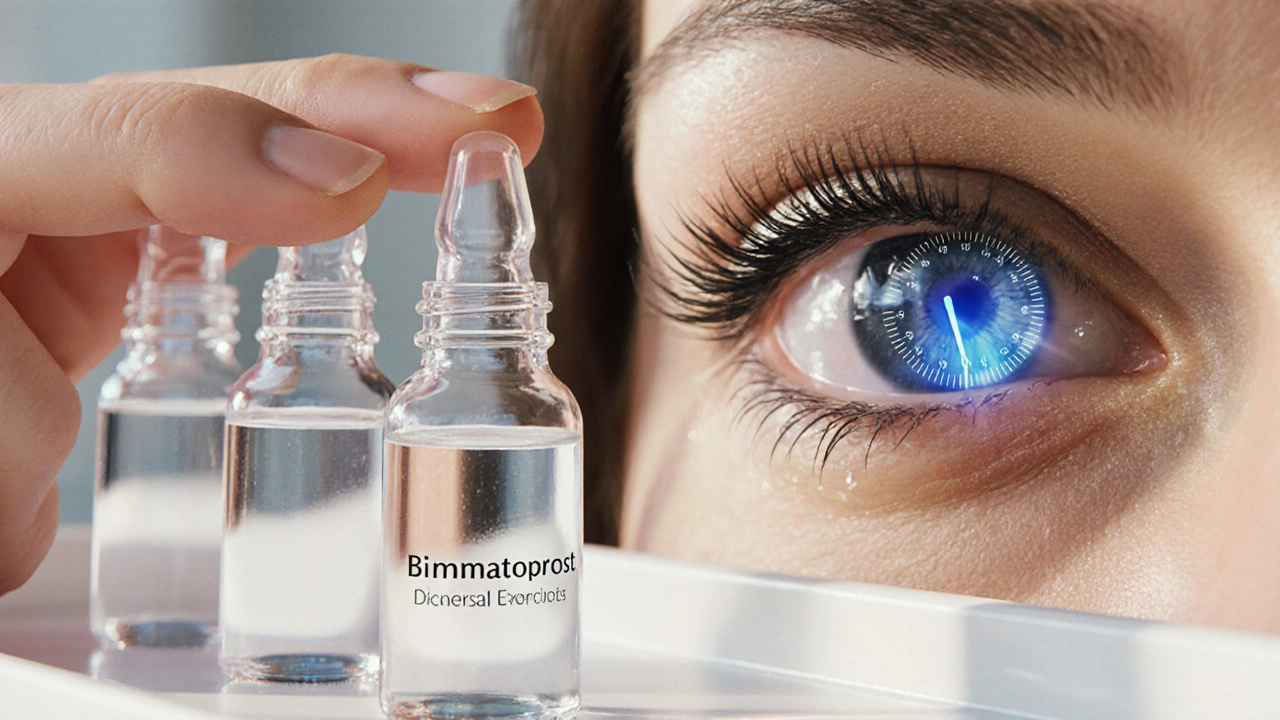
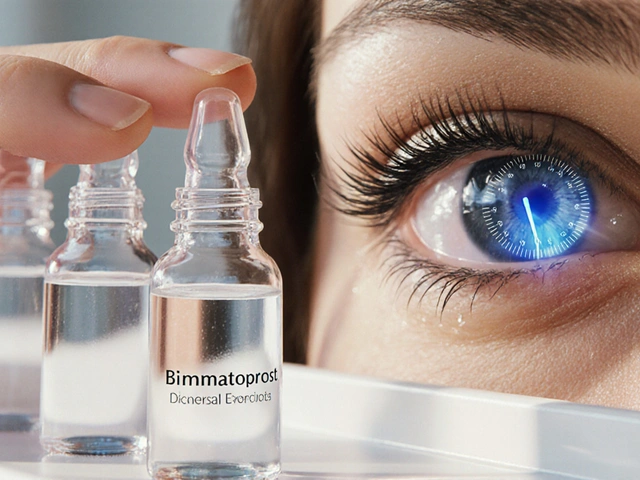



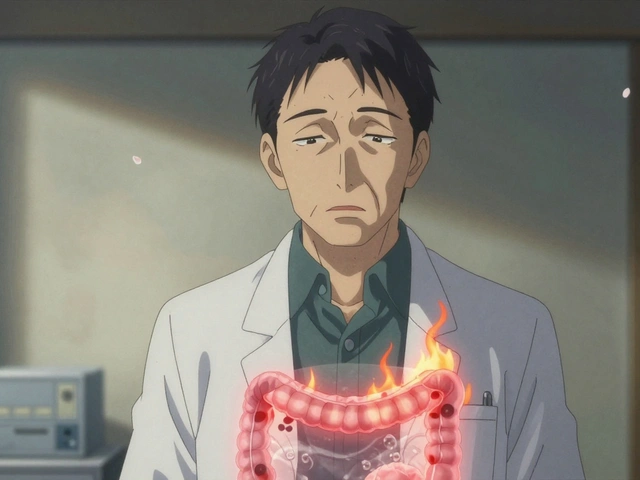

David McClone
October 13, 2025 AT 16:07Oh great, another glorified marketing brochure for eye drops that promises a miracle while your wallet weeps.
Jessica Romero
October 20, 2025 AT 14:47The comparative efficacy of prostaglandin analogues hinges on nuanced pharmacodynamic parameters that extend beyond mere percentage IOP reduction.
The latter’s affinity for the FP receptor manifests in a marginally superior aqueous outflow enhancement.
Clinically, this translates to an average IOP decrement of approximately 25‑30 % versus 22‑26 % observed with latanoprost.
However, the incremental benefit must be weighed against a higher incidence of conjunctival hyperemia, which, while generally benign, may affect patient adherence.
The safety profile of travoprost aligns closely with bimatoprost, yet its preservative‑free formulation offers a modest reduction in ocular surface irritation.
Beta‑blockers such as timolol operate via a distinct mechanism-namely inhibition of adrenergic stimulation of aqueous humor production-rendering them unsuitable for patients with reactive airway disease.
In the context of comorbid asthma, prostaglandin analogues remain the preferred first‑line agents, obviating systemic bronchospastic risk.
From a pharmacoeconomic standpoint, generic latanoprost and timolol present compelling cost‑effectiveness, especially in health systems where prescription expenses are closely scrutinized.
Conversely, brand‑name bimatoprost, though occasionally available in generic form, typically commands a premium price point.
Adherence considerations also encompass dosing frequency; the once‑daily regimen of prostaglandins simplifies patient schedules relative to carbonic anhydrase inhibitors, which may necessitate multiple daily administrations.
Moreover, the cosmetic side effect of eyelash hypertrichosis associated with bimatoprost can be either advantageous or undesirable depending on individual patient preferences.
In refractory cases, combination therapy-pairing a prostaglandin analogue with a carbonic anhydrase inhibitor or alpha‑2 agonist-can synergistically achieve cumulative IOP reductions approaching 35 %.
Nevertheless, clinicians must vigilantly monitor for additive ocular surface toxicity when layering multiple agents.
Patient education remains paramount; articulating the trade‑off between maximal IOP control and potential side effects empowers shared decision‑making.
Ultimately, the selection algorithm should prioritize the drug that optimally balances efficacy, tolerability, cost, and patient lifestyle factors.
Thus, while bimatoprost may edge out its peers in raw pressure‑lowering potency, latanoprost often emerges as the pragmatic first‑line choice for the majority of glaucoma patients.
Michele Radford
October 27, 2025 AT 12:27Honestly, the whole "choose the strongest" narrative is just a way for pharma to sell more pricey bottles. Bimatoprost may shave a couple percent off pressure, but most patients never notice a difference in vision preservation.
Mangal DUTT Sharma
November 3, 2025 AT 11:07Hey there, I totally get the frustration 😅. While the % numbers sound impressive, remember that consistency and comfort matter more than a tiny edge. If an eye drop causes chronic redness, you’ll likely skip doses, defeating the purpose. 😊
It’s also worth noting that many patients report better long‑term adherence with latanoprost simply because it’s gentler on the eye. That’s why I often suggest trying the less aggressive option first, then stepping up if needed. 🙏
Gracee Taylor
November 10, 2025 AT 09:47Both points are valid, and the best approach really depends on individual tolerance and cost considerations. Ultimately, a shared decision between patient and clinician leads to the most sustainable outcome.
Leslie Woods
November 17, 2025 AT 08:27So which one is actually better I guess it depends on the person and the doctor they see I think the longer term side effects matter a lot you cant ignore the cost factor either but everyone will say talk to your eye doctor
Sunil Kamle
November 24, 2025 AT 07:07Dear Sir or Madam, I must respectfully point out that while the discourse surrounding prostaglandin analogues is indeed extensive, it does not necessarily constitute a comprehensive analysis of patient‑centred outcomes; nonetheless, one might humorously observe the ever‑present allure of "the strongest" claim.
Michael Weber
December 1, 2025 AT 05:47What is the philosophical merit of reducing intra‑ocular pressure by a mere fraction if the soul of the patient is burdened by the red eye of despair? One must weigh the metaphysical cost of ocular irritation against the tangible benefit of pressure control, lest we become mere pharmacists of the body without tending to the spirit.
Blake Marshall
December 8, 2025 AT 04:27Look man bimatoprost is the king of eye drops u cant beat the power its like wtf other drops are just wannabes lol.
duncan hines
December 15, 2025 AT 03:07Oh, the drama of choosing eye drops! I mean, why even bother when the pharma giants will push the most expensive option and claim it's superior. It's a tragedy, really.